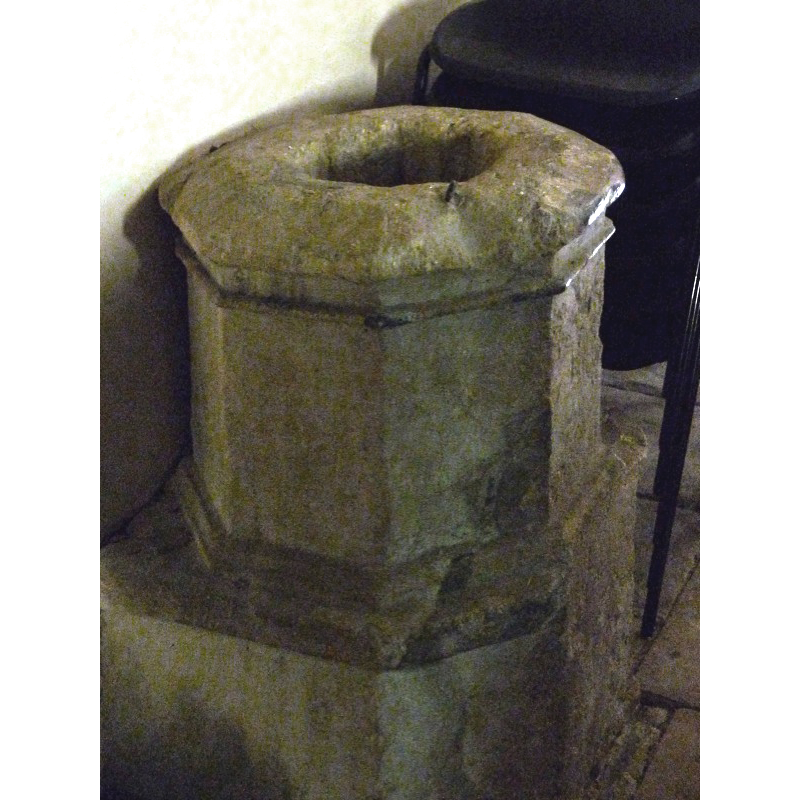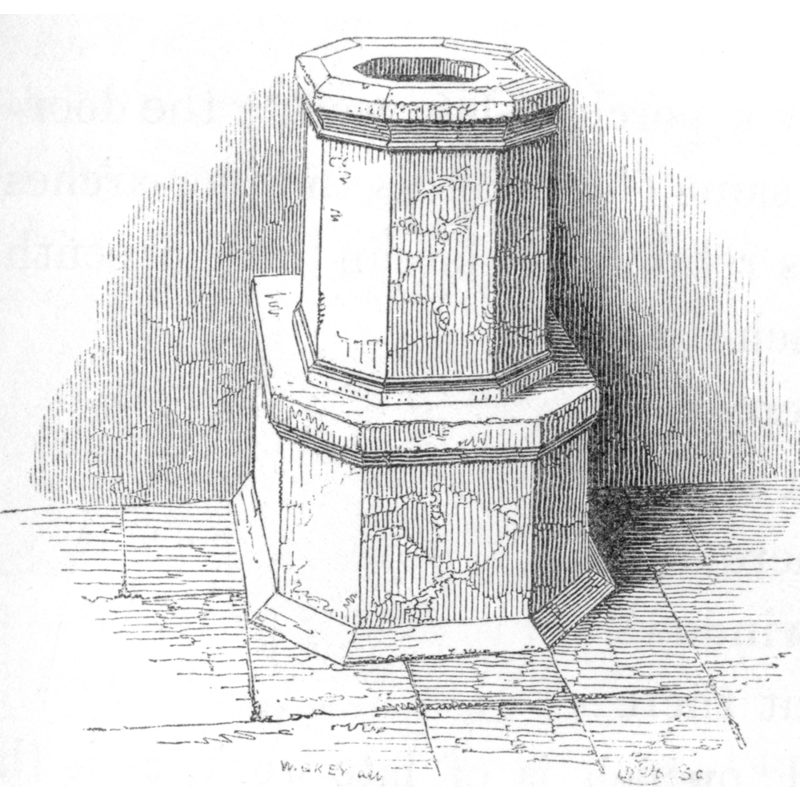Horspath No. 2 / Horsepath / Horspadan

Image copyright © John Ward, 2009
Standing permission
Results: 2 records
view of stoup
INFORMATION
FontID: 05794HOR
Object Type: Stoup
Church/Chapel: Parish Church of St. Giles
Church Patron Saints: St. Giles [aka Aegidus, Egidus, Gilles]
Church Location: Church Road, Horspath, Oxfordshire, OX33 1SE
Country Name: England
Location: Oxfordshire, South East
Directions to Site: Located 6 km ESE of Oxford
Ecclesiastic Region: Diocese of Oxford
Historical Region: Hundred of Bullingdon
Font Location in Church: In the S aisle, on the W side of the door
Century and Period: 12th - 13th century, Late Norman / Early English?
Credit and Acknowledgements: We are grateful to John Ward, of Oxfordshire Churches [http://homepage.mac.com/john.ward/oxfordshirechurches], for his photograph of this font
Church Notes: "In the Domesday Survey Horsepath is mentioned by the name of Hospadan, and the manor was then the property of the King, and was granted to Roger de Ivery. It was afterwards the property of the Knights Templar" (ibid., p. 353)
Font Notes:
Click to view
The Gentleman's Magazine issue for July-Dec. 1841 includes a mention of this font in "a paper read by Mr. Grey, of Magdalene hall, on Horsepath church, near Oxford [...] The nave and aisle are of the transition Norman style, with a font, and a curious stoup, probably of the same period; this is attached to the wall close to the south door, and has at first sight the appearance of a second font, but the small scolloped basin shews the purpose for which it was used." [source: http://books.google.com]. Described and illustrated in the Guide to the Architectural Antiquities of the Neighbourhood of Oxford (1846): "the greatest curiosity of this Church is on the west side of the door. The vilagers say that it is a second font; some have supposed it to be the base of a cross, some the upper part of a shaft: but it is more probable that it is a stoup. If so, it is probable unique, for it is of the same as the oldest parts of the church". A stoup of the Early English period is noted in Parker (1850). Noted in Kelly's Oxford Directory of 1911: "in the south aisle, near the door, is a unique stoup, consisting of an octagonal cylinder with moulded rim, on a high base of similar shape". Murray (1882) writes: "The font and are curious and of early date." The Victoria County History (Oxford, vol. 5, 1957) notes: "By the south door is what seems to be a 12th-century stoup, the origin and purpose of which has been much debated." [NB: this VCH text is footnoted: "Parker, Guide, 350, 354; MS. Top. Oxon. d 92, f. 57."] [cf. Index entry for Horsepath No. 1 for an early baptismal font in this same church]
The odd object looks like a tall octagonal mounted holy-water stoup; it consists of two volumes: the basin is octagonal with vertical sides, having a slightly protruding upper rim [it looks like a hollowed out pedestal base rather than a basin]; the lower volume is quadrangular but the front angles have been trimmed, while the back remains flat against the wall. It is an odd-looking stoup. This is probably the same stoup referred to in Cox & Harvey (1907: 236), who date it "of the earlier part of the 13th century", therefore from the Early English period.
COORDINATES
UTM: 30U 626081 5733476
MEDIUM AND MEASUREMENTS
Material: stone
Number of Pieces: two?
Font Shape: octagonal (mounted)
Basin Exterior Shape: octagonal
REFERENCES
Victoria County History [online], University of London, 1993-. Accessed: 2012-06-13 00:00:00. URL: https://www.british-history.ac.uk.
Cox, John Charles, English Church Furniture, New York: E.P. Dutton & Co., 1907
Kelly, Kelly's Directory of Oxfordshire, London: Kelly's Directories Ltd., 1911
Murray, John [the firm], Handbook for travellers in Berks. Bucks and Oxfordshire, including a [...], London: John Murray, 1882
Oxford Society for Promoting the Study of Gothic Architecture, Guide to the Architectural Antiquities in the Neighbourhood of Oxford, A, Oxford: John Henry Parker [for the Society], 1846
Parker, John Henry, A Glossary of Terms used in Grecian, Roman, Italian and Gothic Architecture, Oxford: J. H. Parker, 1850
